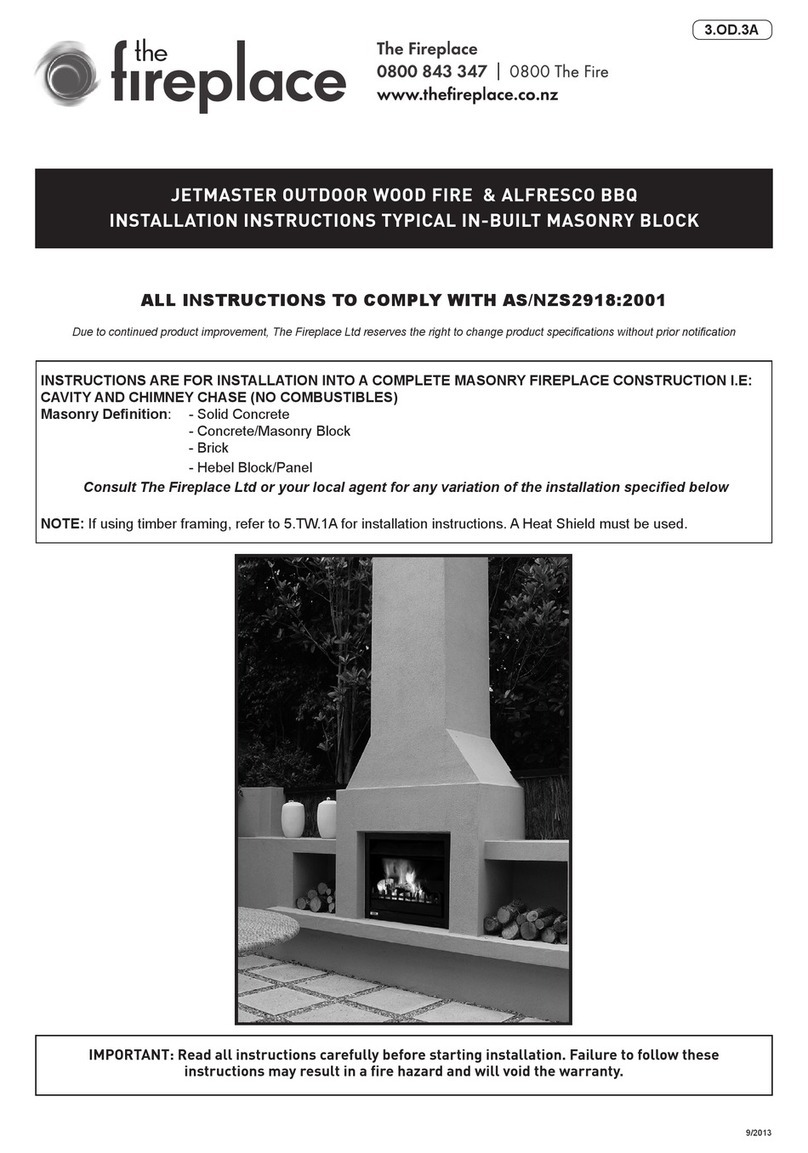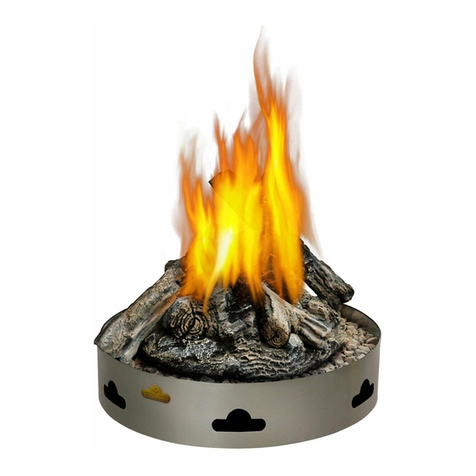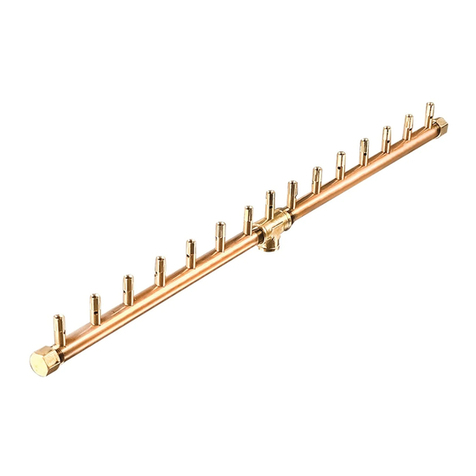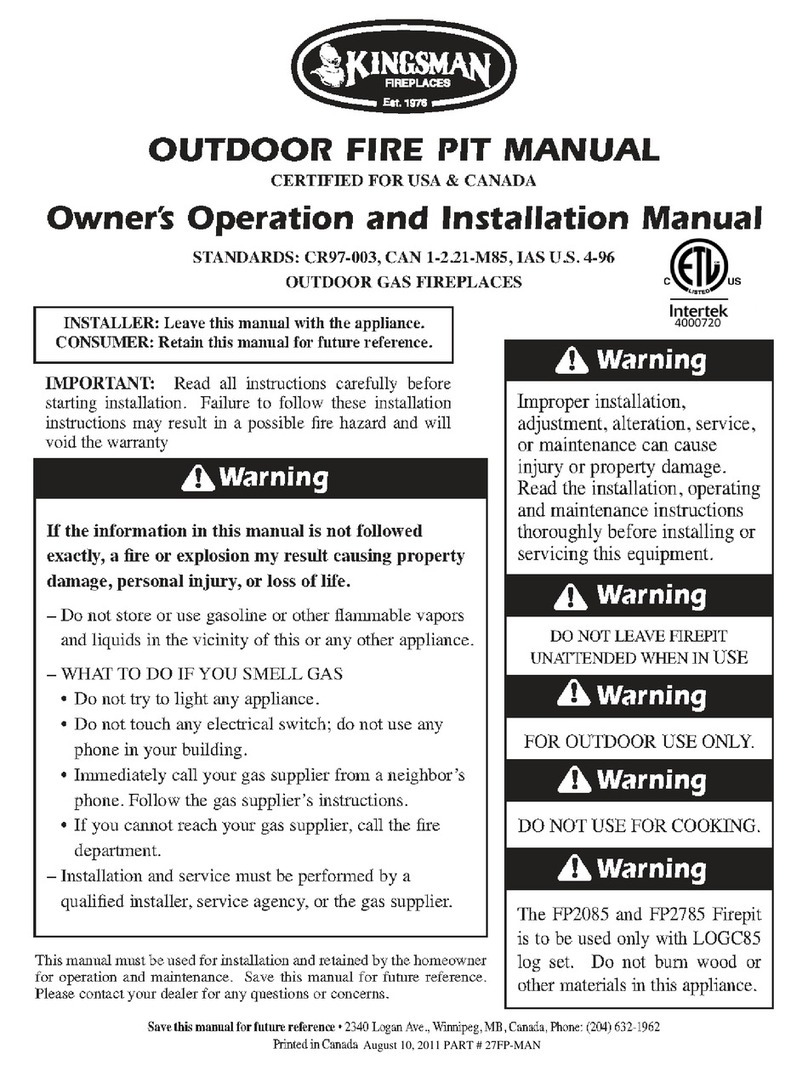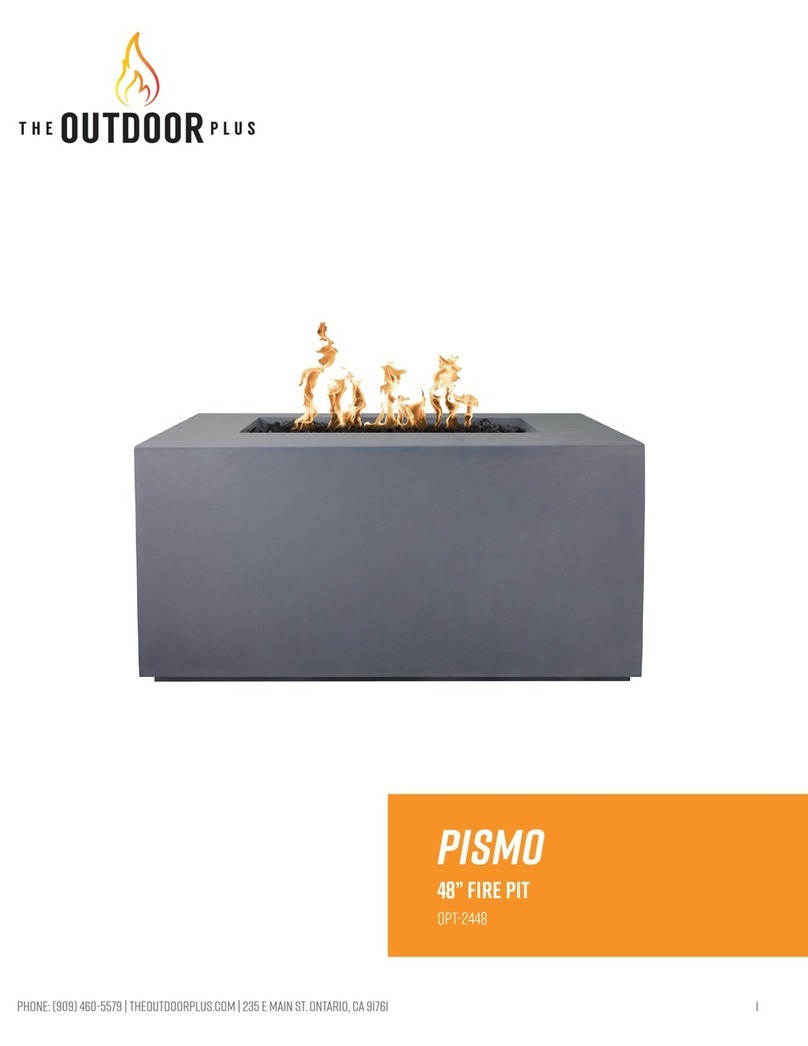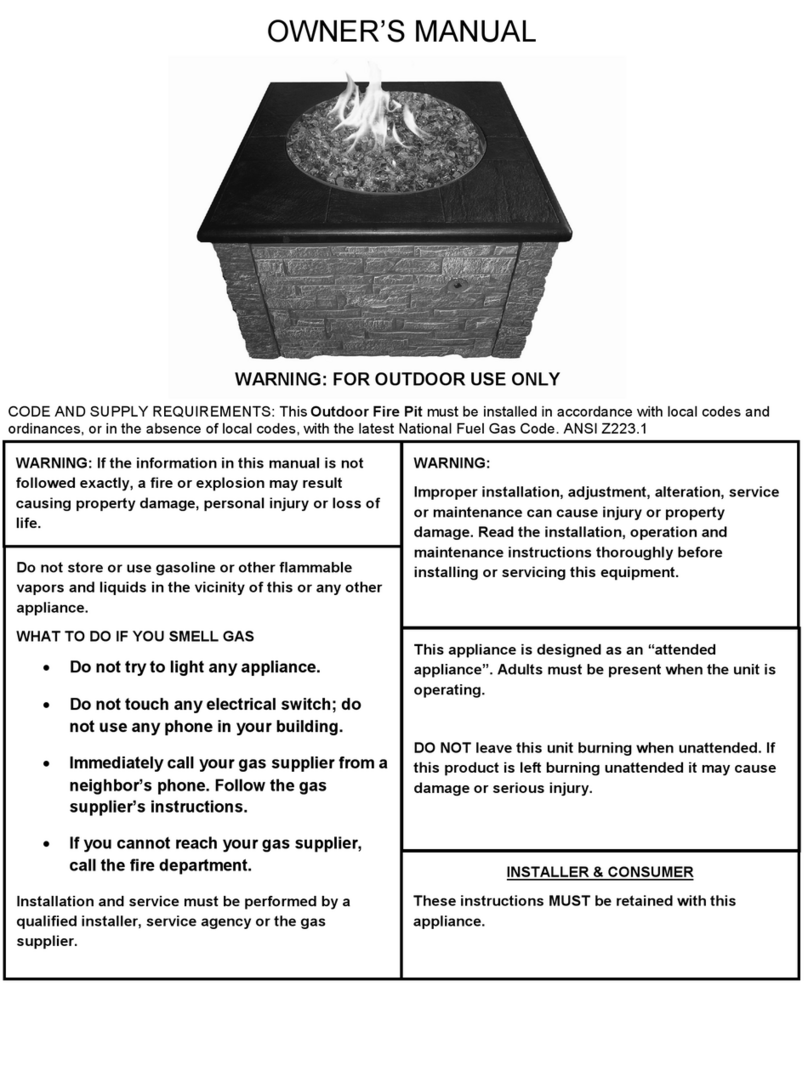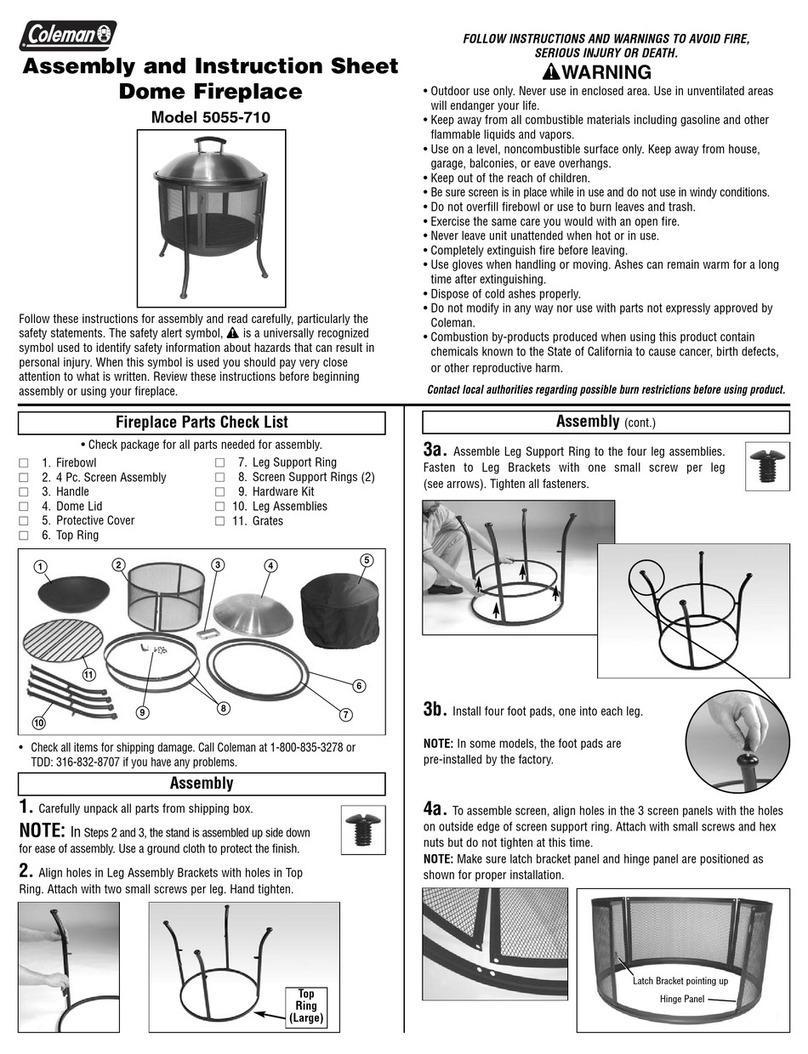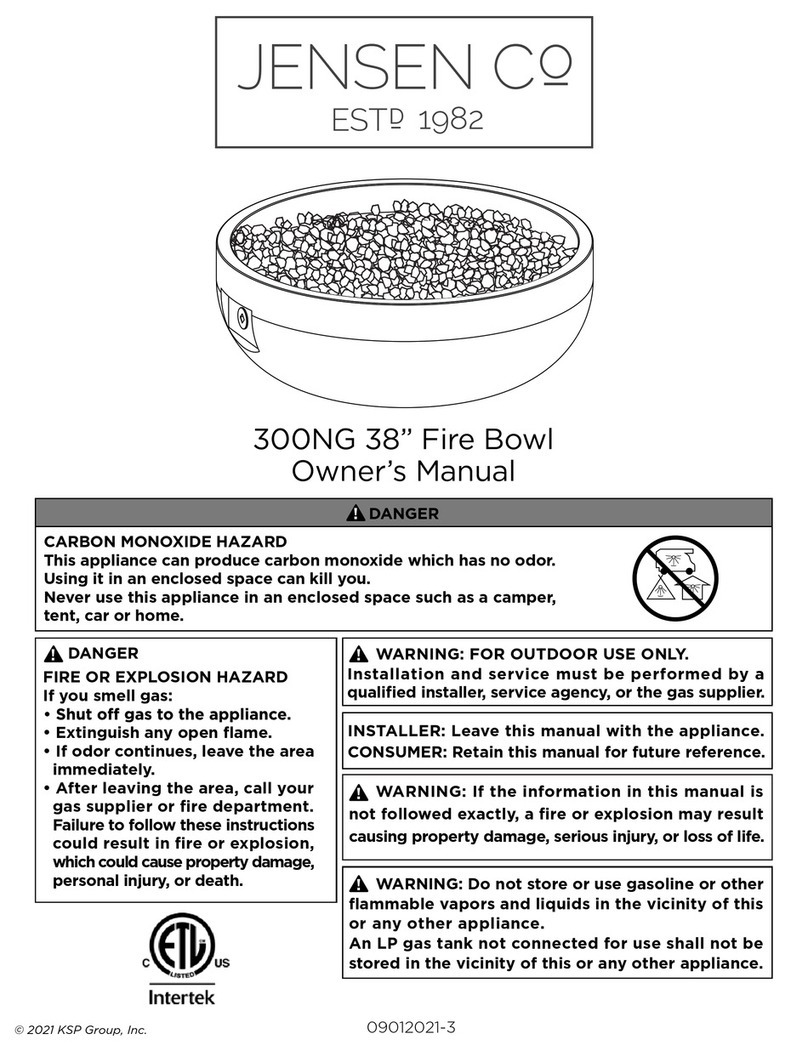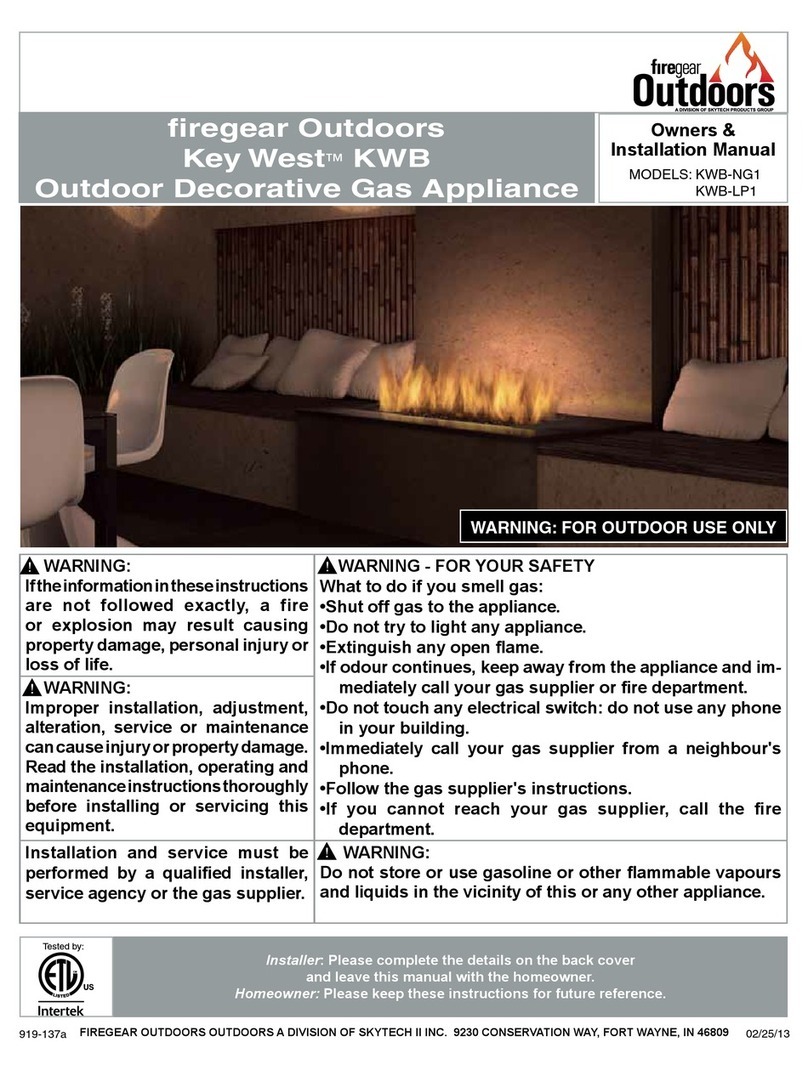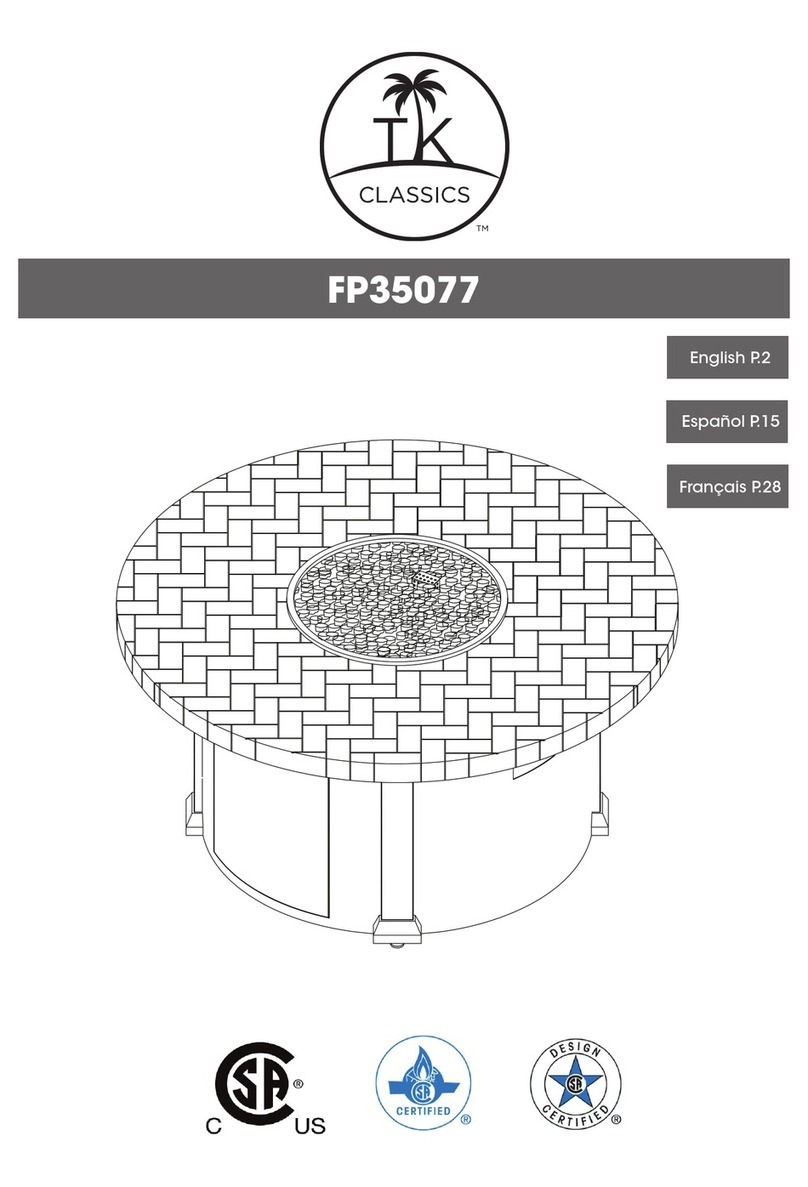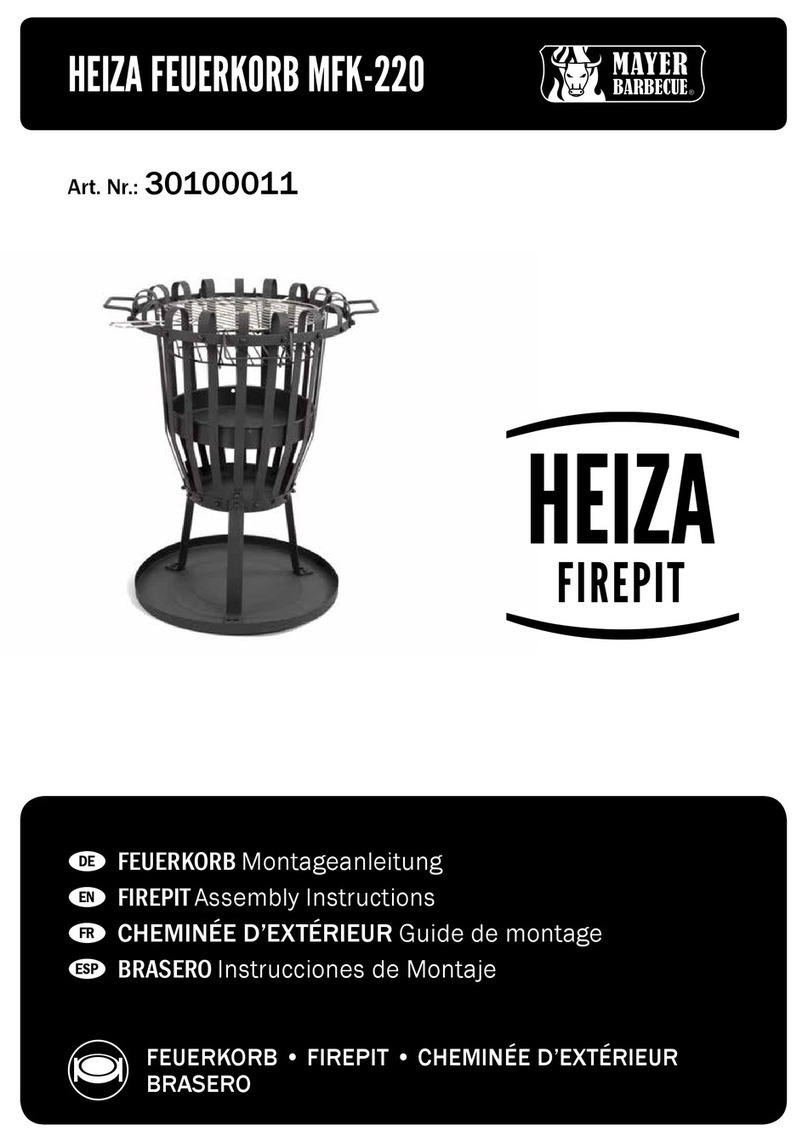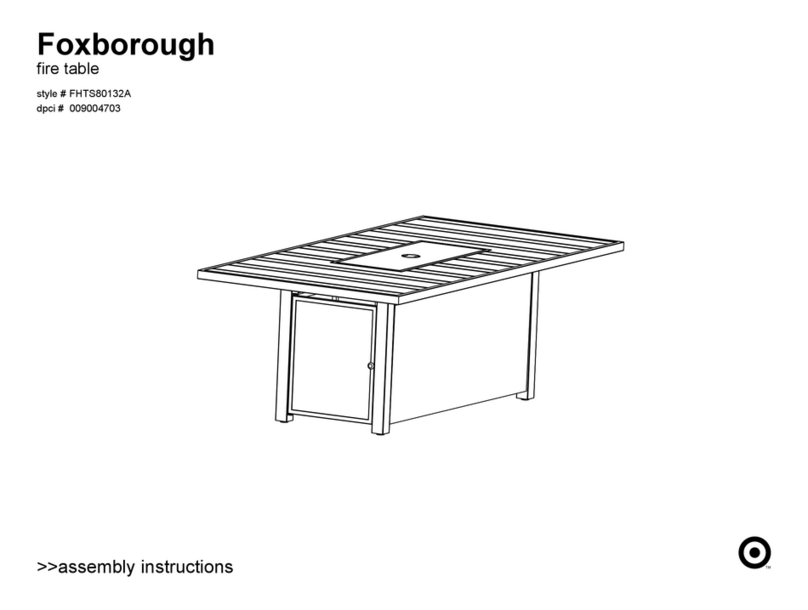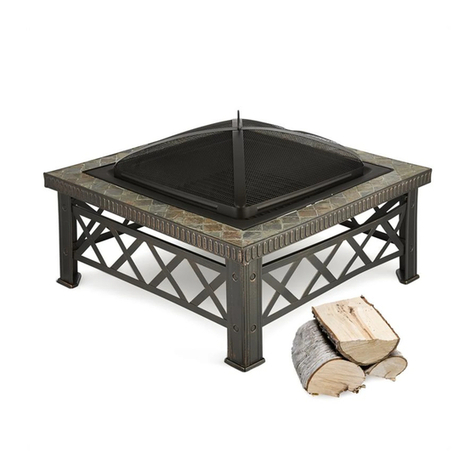
appliance and its individual shutoff valve must be discon-
nected from the gas supply piping system during any
pressure testing of that system at test pressure in excess
of ½ psi (3.5kPa);
The appliance must be isolated from the gas supply pip-
ing system by closing its individual manual shutoff valve
during any pressure testing of the gas supply piping sys-
tem at test pressures equal to or less than ½ psi (3.5 kPa).
12. Ignite burner. See applicable ignition instructions
within Operating Instructions, page 20.
13. Electronic ignitions can either be hard wired into main
-
let/receptacle per local codes. The electrical supply
must be connected to an ON/OFF switch that is ex-
ternal to the pit. Remote controls, emergency stops,
and dial timers are optional add-ons.
14. Once appliance is lit, perform leak test on all gas con-
nections and repair as needed.
15. Turn off appliance and allow to cool.
16. Set appliance into properly constructed, level, non-com-
bustible enclosure. The enclosure must be on a stable
surface. The weight of the appliance must be supported
by the plate or pan and not by any control box or gas
valve. Blocks, bricks, metal collars or L-brackets can be
used to build a support ledge for the system plate or
pan. Control boxes and gas valves must be above grade
with adequate drainage to prevent water damage.
Installer is responsible for making sure there is enough
space in the cavity for any electronics and piping. The
interior space of the enclosure cannot be lled with
any material (i.e. gravel, crushed rock, concrete, etc).
wind and to allow coverage of burner. See Clearances
Diagram for details.
17. To allow for regular maintenance, any capstone
materials should not overhang the interior edge of
Clearances Diagram on page 8 for
placement. Warming Trends® is not responsible for
any damages to the capstone.
18. Venting is required to avoid heat damage to inter-
pooling. Incorporate 1 vent on at least two opposing
sides (2 vents total) at a minimum size of 18 sq. inches
each for 36” total (example: 3”x 6”). Installation of
the vents in the mid to lower area of the enclosure is
recommended. Some enclosures may require more
ventilation based on material, size, and extended use.
Ready-to-Finish Kits come with Fire Pit Vent Kit (FPVK).
Vents do not come pre-installed on Ready-to-Finish.
Fire Pit Vent Kits must be installed on site.
19.
etc.) approved for use with high temperatures that
-
tures. Never use any material for media that is non-po-
rous and holds moisture such as gravel, pebbles, river
rock, etc. Such material, when heated, may cause the
trapped moisture to boil, fracture unexpectedly and/
or explode and which could cause personal injury,
damage or death.
20. To avoid dust and clogs getting into the system, do not
dump the media over the burner. Place the media onto
the plate or pan. Burner should be covered by ap-
proved media up to ½” above the jets. Media may be
positioned so that jet tips or barrels are visible. Exces-
sive media coverage may cause back pressure and
dangerous pooling of gas which can result in explo-
sion which could cause property damage, personal
injury, or death.
21. Do not cover the ignition pilot assembly or wind cage
more than half way with any form of media. Do not
place ceramic logs too close to the pilot assembly as
this may cause excessive heat and system failure that
is not covered by warranty.
22. Ceramic log sets, must be pre-treated before use to
avoid breaking or crumbling. Burn logs for 15 minutes,
then leave untouched to cool for at least one hour before
moving them again, or they could break or crumble.
23.
24. Review instruction manual with end user and instruct end
WARNING: Improper installation, adjustment
alteration, service or maintenance can cause
property damage, personal injury or loss of
life. Refer to the owner’s information manual provided
with this appliance. Installation and service must be
gas supplier.
WARNING: Do not store or use gasoline, or
of this or any other appliances.
An LP-cylinder not connected for use shall not be stored
in the vicinity of this or any other appliance.
AVERTISSEMENT: Une installation, un
cause de blessures ou de dommages. Veuillez lire
attentivement les instructions d’installation, d’utilisation
AVERTISSEMENT: Ne pas entreposer ni
utiliser de l’essence ni d’autres vapeurs ou
de tout autre appareil.
voisinage de cet appareil ou de tout autre appareil.
The following label has been provided with the appliance.
appliance.
